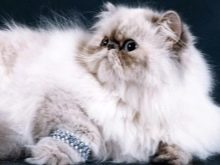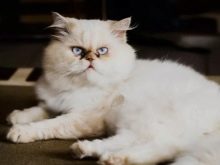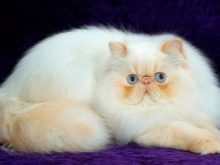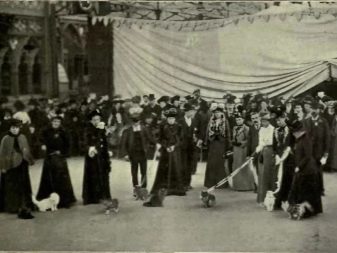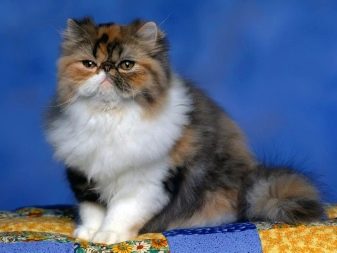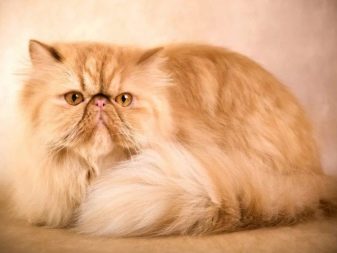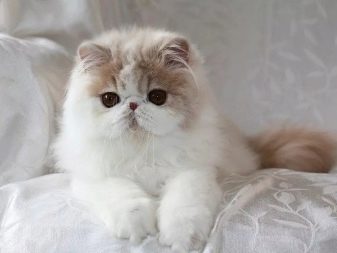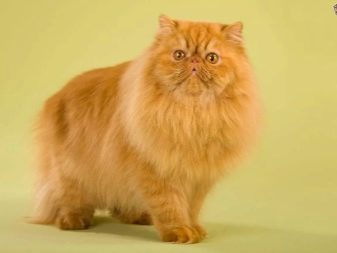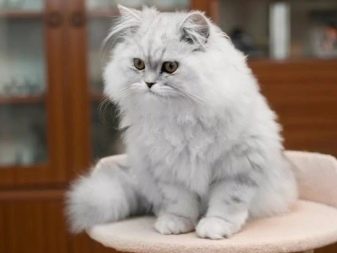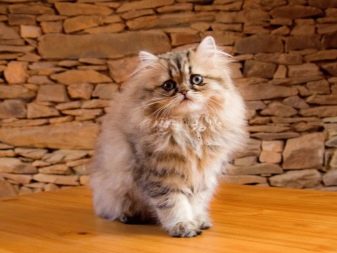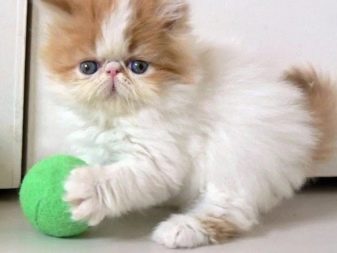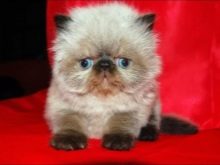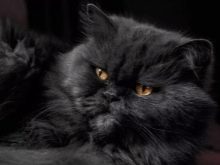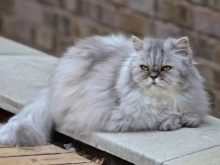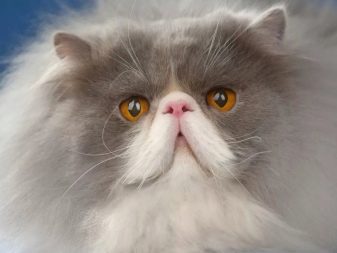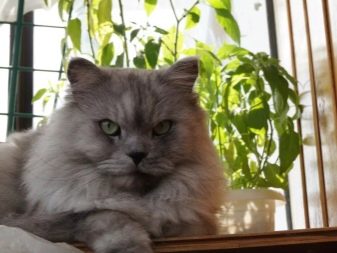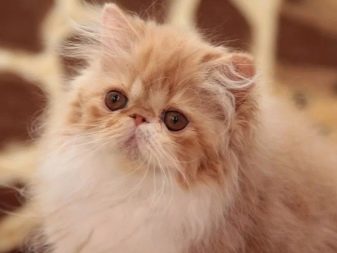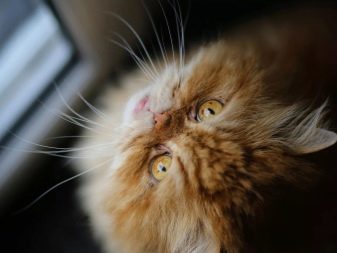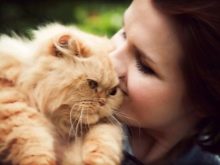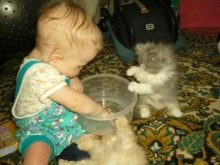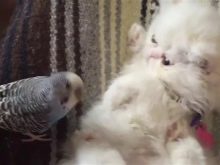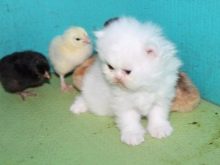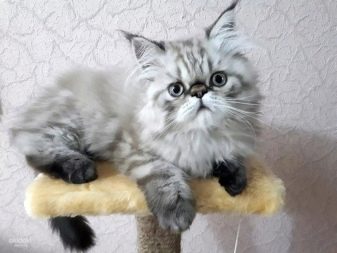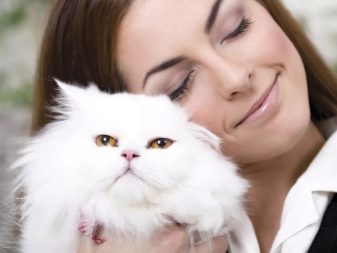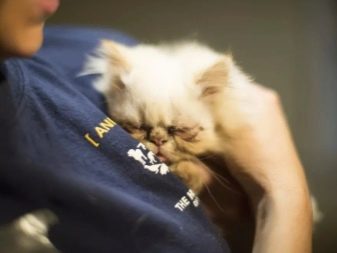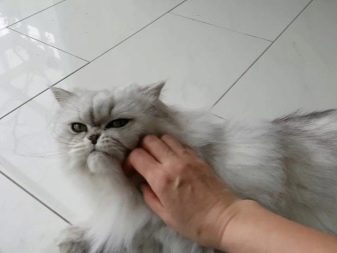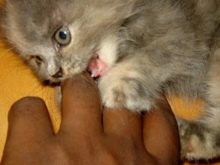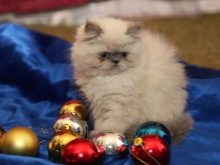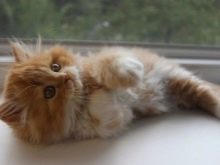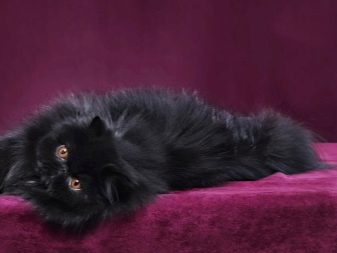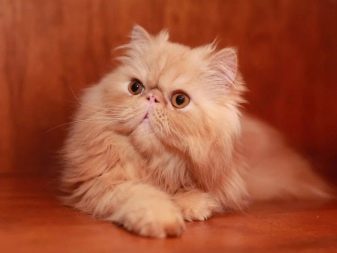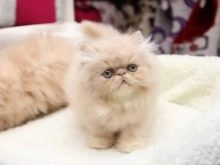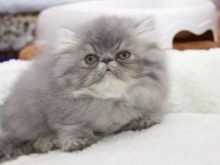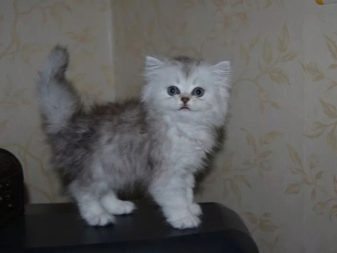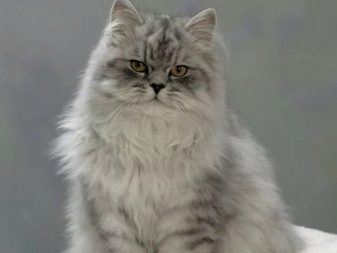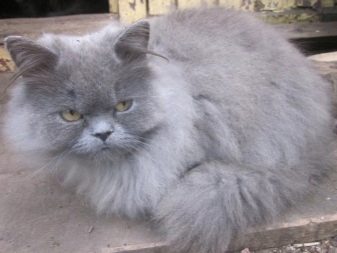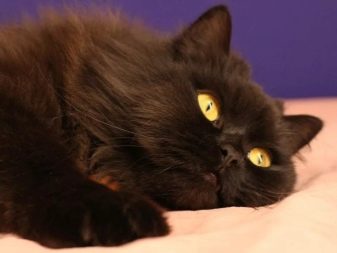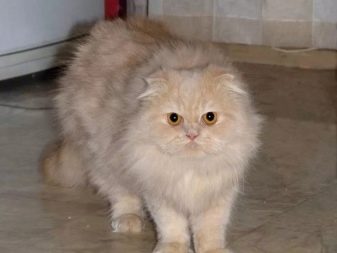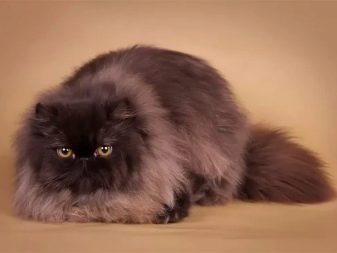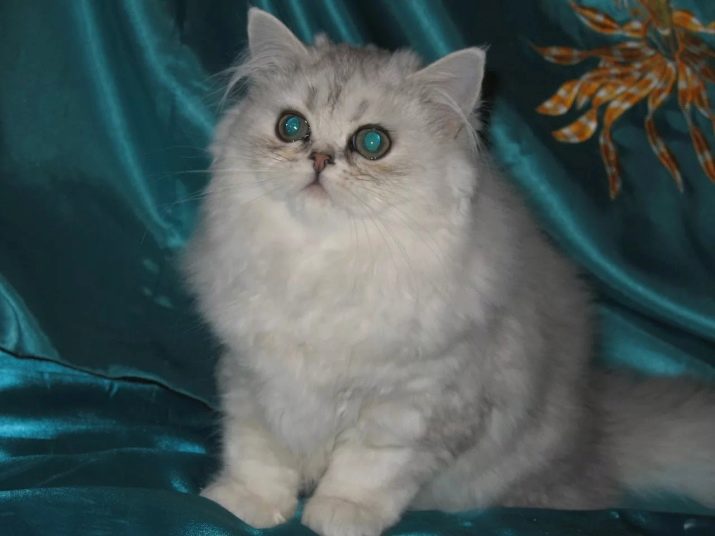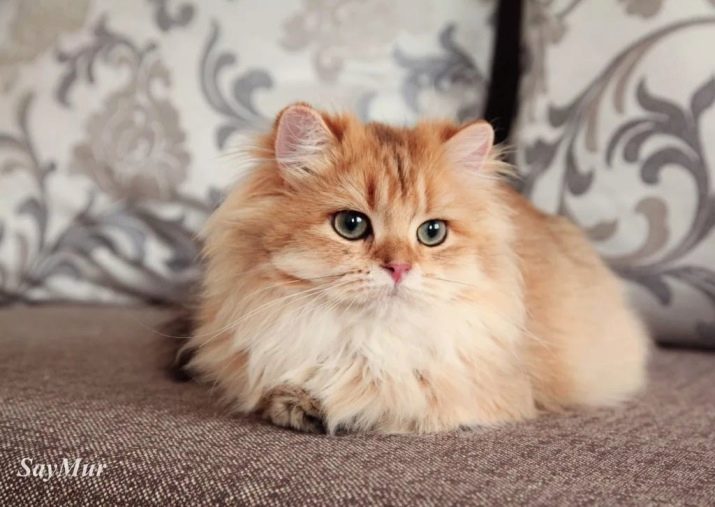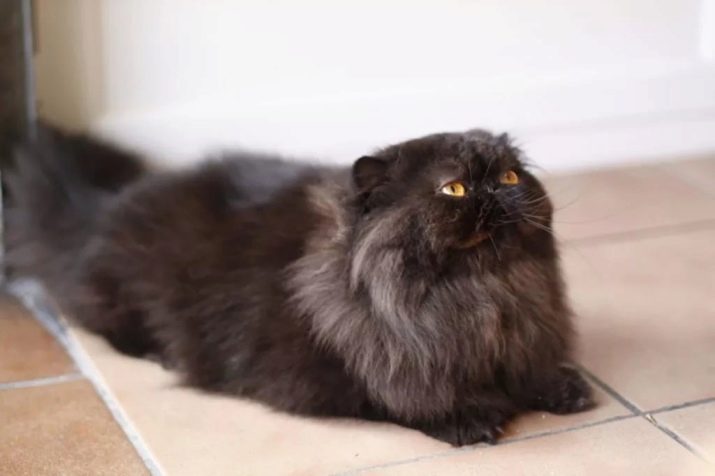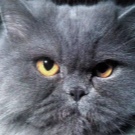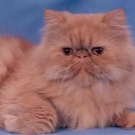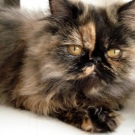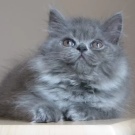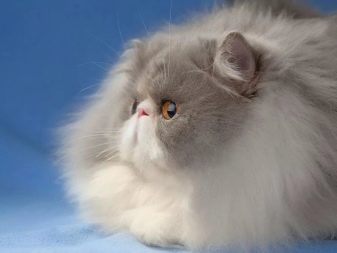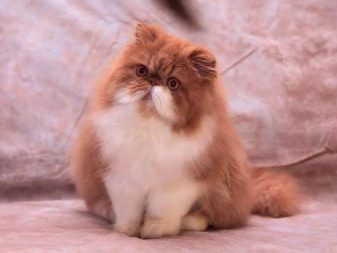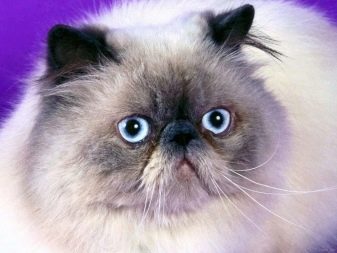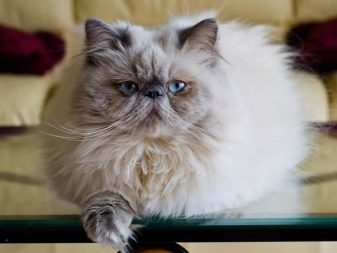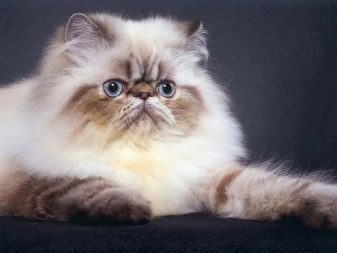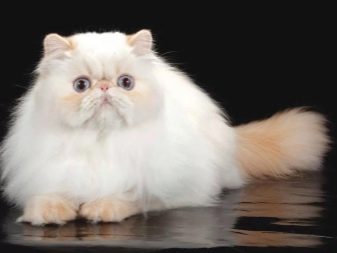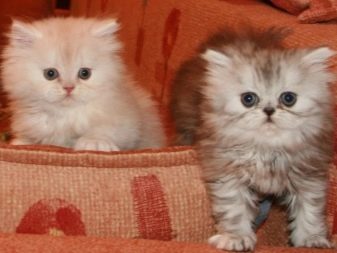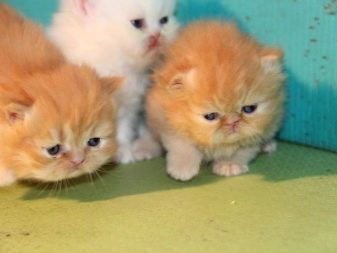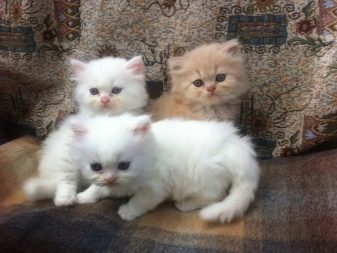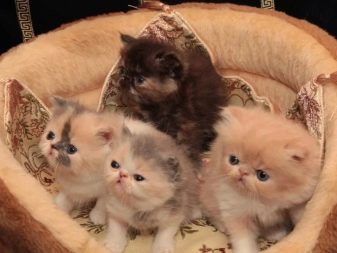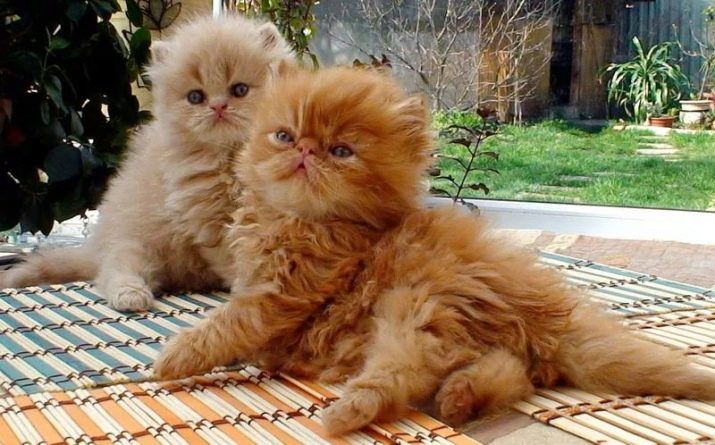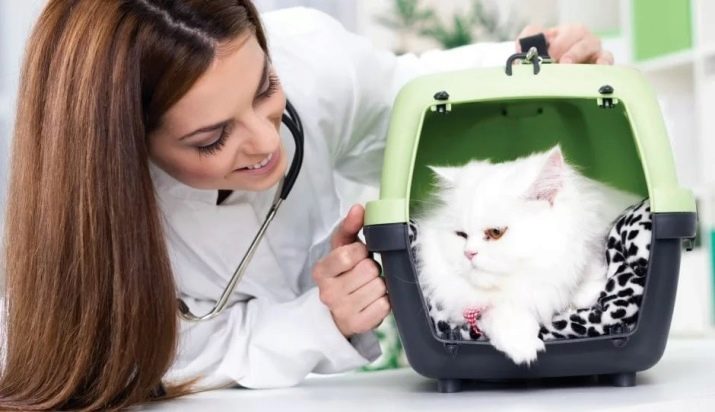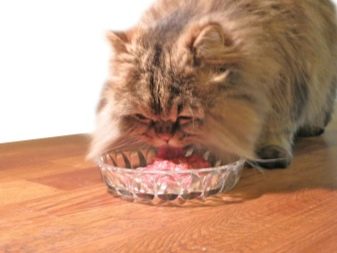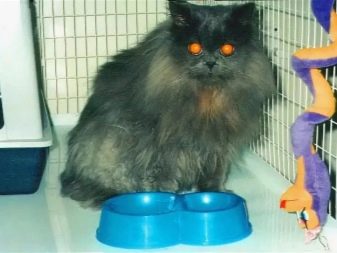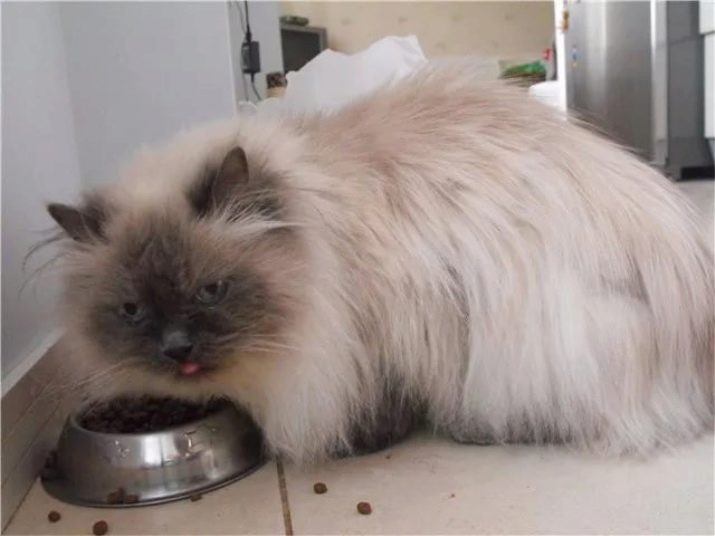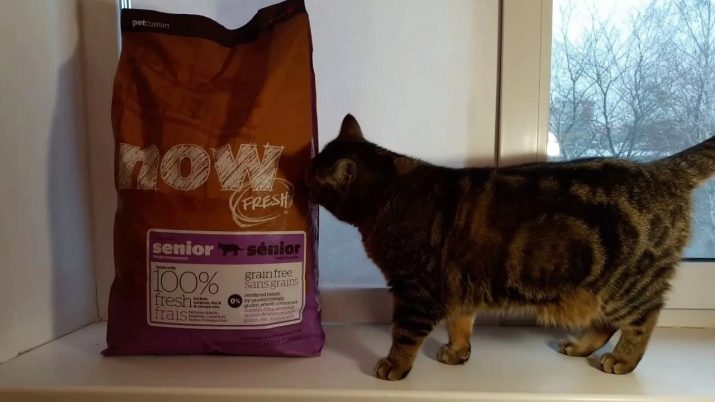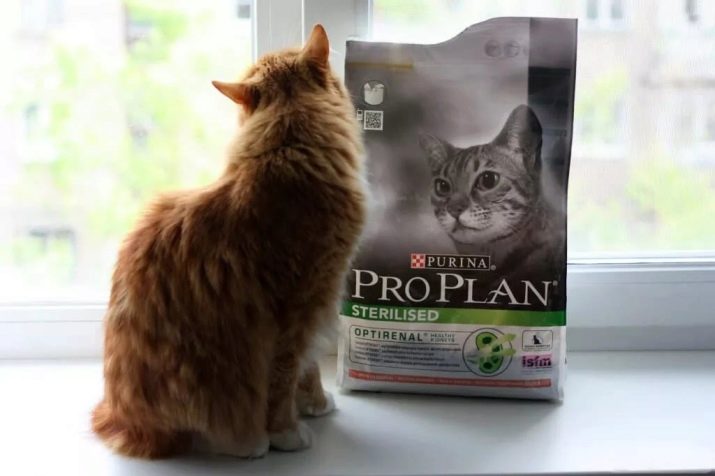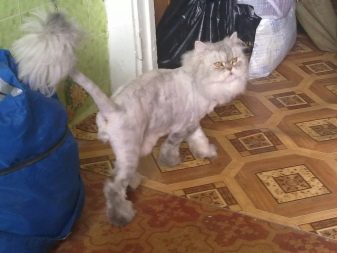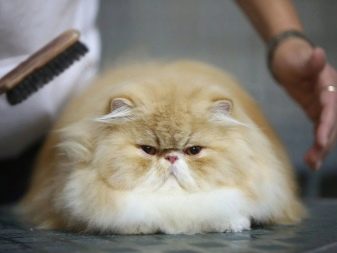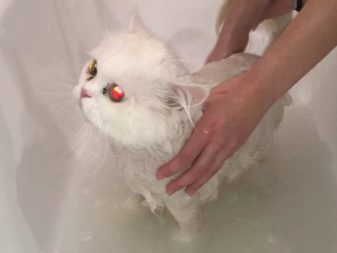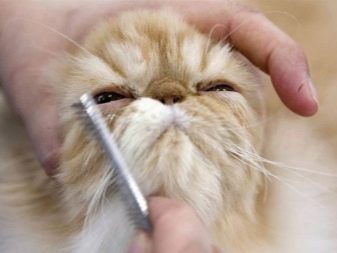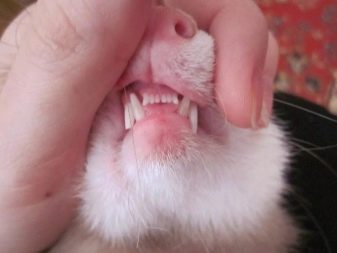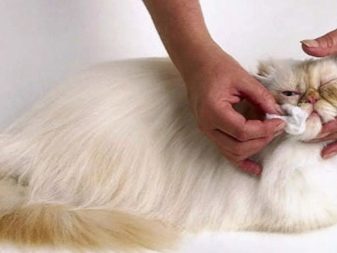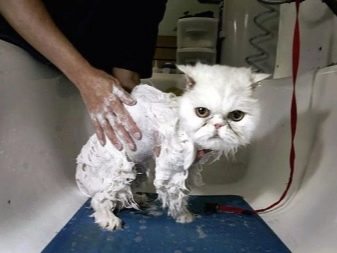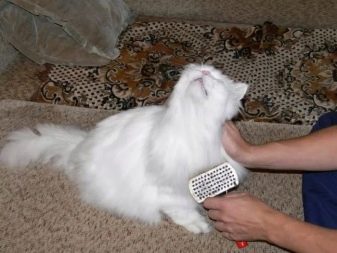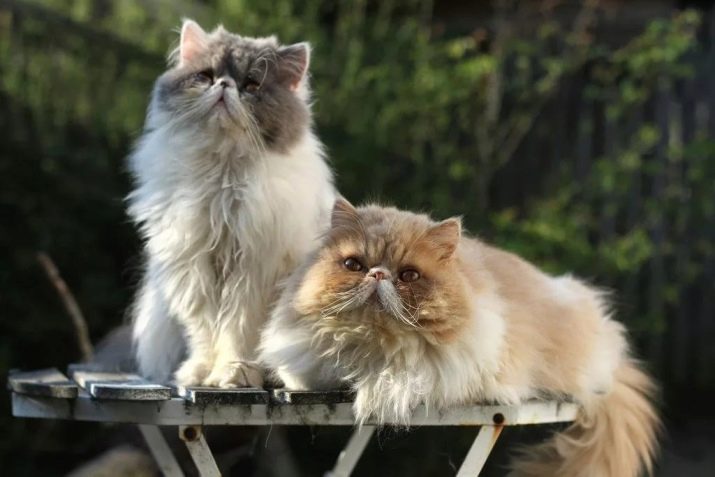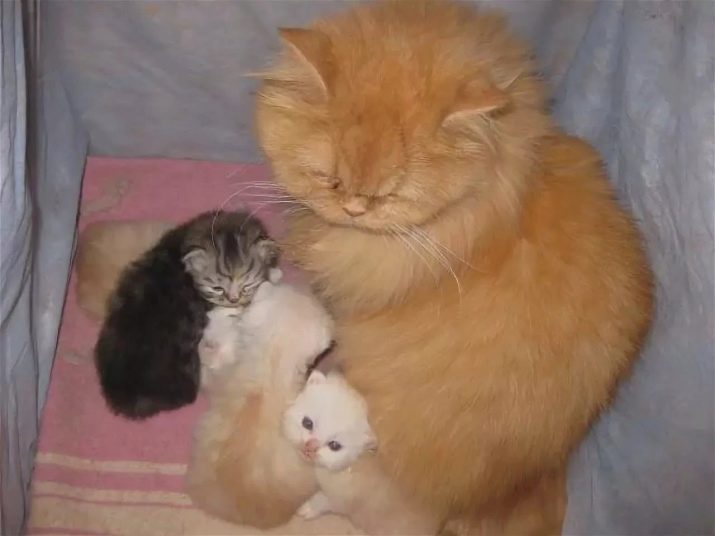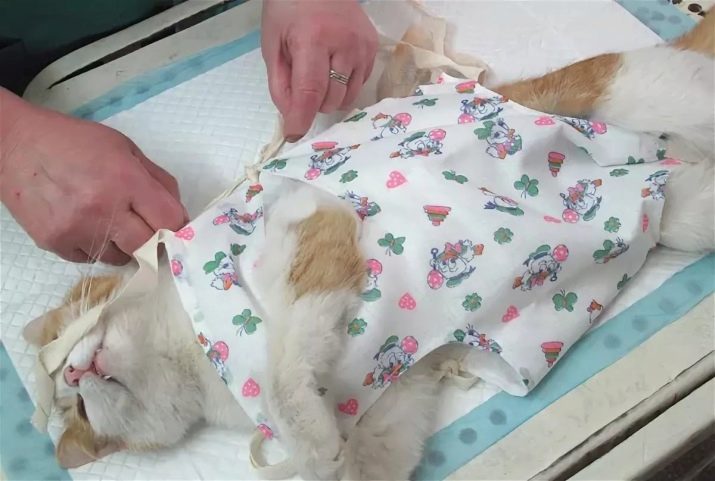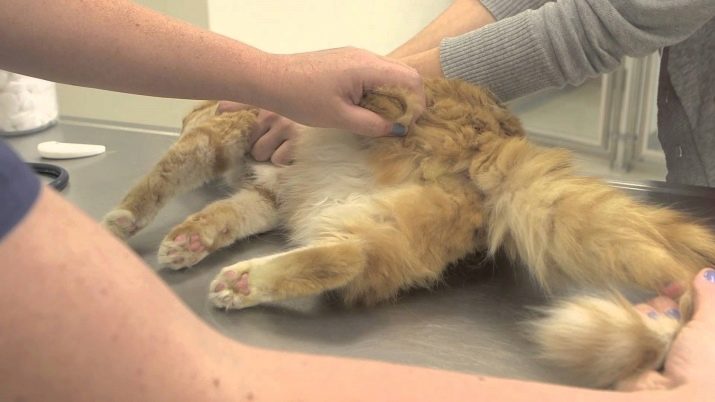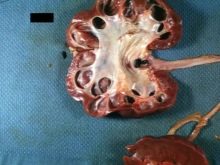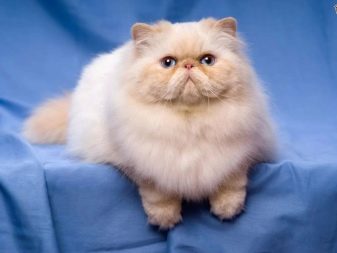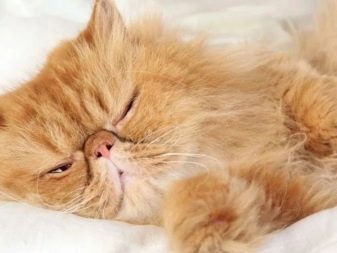Persian cat: description, character, types and recommendations for care
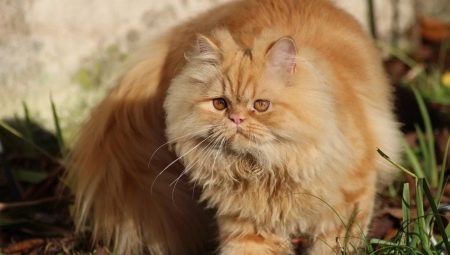
Persian cats are unusual and beautiful representatives of the cat family. They have a good character, various types of coat color and are one of the most recognizable breeds of cats in the world.
Origin
The first notes about cats with long hair belong to the XVI century. The Italian traveler Pietro Della Vale brought them to Italy for the first time in 1521. Decades later, thanks to the researcher and traveler Nikolai Claude Fabri de Payrese, cats arrived in France.
According to another version, long-haired cats were brought to Europe by participants in the Crusades, who were delighted with their magnificent fur. They were brought from Persia (the territory of modern Iran) approximately in the XIII century.
The French naturalist de Buffon, in his book "The History of Nature", states that they come from the Agora and, therefore, are called Angora cats. They were also called Chinese, Indian and Russian. In England, the name of the French cats was adopted, which is probably due to the fact that these animals were brought to England from France.
Originally it was thought that Persians originated from long-haired cats from the Middle East. However, recent studies say that the ancestors of the breed originate from Russia. Genetic studies have shown their relationship with the Russian long-haired cats and eventually proved the lack of communication with the Asian line.
These animals began to appear in aristocratic salons, becoming a symbol of prestige and elegance. However, their appearance was significantly different from today's standard. They had a fluffy tail, a round head with big eyes and ordinary noses. True, they were able to save their fur, thereby retaining the features of a natural breed. Persian cats have long and thick hair, which cools them on hot days and warms them in the cold.
In 1871 and 1880, these beauties appeared at the first cat shows in London. The first club of Persian cats lovers was created in 1900 in England. These cats became more and more popular.
The characteristic look of the head, flattened face and large round eyes attracted more and more connoisseurs. The remarkable long hair and very calm character, undoubtedly, were and remain the advantage of this breed.
There has been a very rapid spread of this species. Appeared more and more clubs uniting fans of Persian cats. By conscious breeding, based on the correct selection of pairs, the ideal of the Persian cat was obtained.
The number of new colors and combinations of fur has increased. Today we can enjoy a wide variety of colors among all breeds of cats, but no species can compare with the Persians in this respect.
In addition to an interesting appearance, Persian cats have a unique character. They are gentle, balanced and demonstrate extraordinary intelligence.
Interestingly, the name "Persian cat" was given to them in the early twentieth century. Previously used the term "Angora cats". Since then, the breed standard has changed many times. Over time, more and more attention was paid to the round forehead, flat face and abundant soft fur.
With the growing popularity of cats, the number of farms in their breeding has grown rapidly.Some breeders increased the variety of breed species without taking into account the negative impact of breeding on cats' health. The development of features such as the inhaled nose and tearing of the eyes has led to an increase in the spread of respiratory infections and some other diseases in animals.
Description
There are some features of this breed:
- harmonious body structure;
- round, rather large head;
- short and wide nose;
- rounded forehead, protruding cheeks and strong chin;
- big round eyes;
- small, slightly rounded, far apart ears, heavily covered with hair;
- short and massive neck;
- thick, long and silky to the touch fur;
- short but strong legs with large round legs (with tufts of hair between the claws);
- short and bushy tail.
According to the breeders, the body structure of a Persian cat must meet certain requirements. For example, a narrow body is not allowed in this breed.
By nature, cats must be peaceful, sometimes drowsy and somewhat lazy. However, this gentleness of behavior positively affects contact with children, and these cats will not spoil the furniture and interior of the apartment (this can only happen with kittens).
Persian cats love peace and comfort very much and do not always seek to communicate with people. Sometimes they sit in some corner of the house until they get tired of it. Although they love to be pampered, and also to sit on their knees and purr. However, to show that they rule, even after such caresses, the Persians can pretend to be indifferent and completely ignore the masters.
They quickly become attached to their owner. Small Persian kittens are cheerful and quickly learn new habits (for example, sharpen their claws only in a specially designated place). They also like simple toys and, interestingly, they like to look in the mirror. From the very beginning, it is also worth teaching them to comb (often daily).
Breed standard
The current standard of the Persian cat, observed by almost all breeders, determines the overall proportions and phenotype. The main features of this breed are a harmonious body structure, a round head and long fur. This is more important than underlining the individual characteristics of the breed.
The constitution of the Persian cat is from large to medium. It should be squat and have short strong limbs, which does not create the impression of clumsiness. All parts of the body are harmoniously developed. When assessing body size, phenotypic signs are always taken into account.
Experts distinguish about 150 varieties of colors of their wool. And under each color can be your own eye color. The color of the iris depends on the color of the cat and can vary from orange to copper, nut, dark green, emerald green or blue.
The weight of males can reach up to 7 kg, cats - up to 6 kg. Height at withers is 25-38 cm. Persian cats reach maturity at the age of 2 years. Their life expectancy is 11-13 years. But some individuals can live 15 or even 20 years.
Especially characteristic is not only the fur of the Persians, but also their muzzle. A wide head with round ears and a very short wide nose will not allow the Persians to be confused with any other breed. The nasal bridge may end between the eyes (the so-called "Stop").
Character
The character of Persian cats is peaceful. Sometimes they are accused of being lazy and forever lethargic. Perhaps, due to their softness, they behave very well with children, and, of course, do not pose a threat to them. Having these cats at home, we can also not worry about the state of our interior, with the exception of a short period of childhood. Usually they do not beat vases and other decorative things (which cannot be said about other cats).
Besides, Persians love when they are caressed and prefer luxury, comfort and peace of mind. That is why when a kitten gets bored in a company, he hides in the smallest corner of the apartment or lies in a leather chair and does not think to move until he considers it necessary.
These cats can also play with other animals and small children. They do not like to run and jump. Even if there is a garden and plenty of space for outdoor activities, they prefer to choose a comfortable chair at home. These cats are ideal for keeping in an apartment.
Persians are completely non-conflicting and extremely intelligent cats. Guests at home and accept no problems. They also easily adapt to changing conditions and quickly learn new rules at home.
Despite the calm nature, the nature of the predator is still reflected in their habits. Persians should be able to climb, play and hide in the back streets of the house. This is especially important in the case when cats are kept in an apartment. In appropriate conditions, they can remain in good physical and mental form until death.
They also need a place to scratch. Cats should sharpen claws to rid them of the dead layer. Thus, they also mark the territory with the help of the fragrant glands located on the tips of their paws, spreading the smell that is invisible to us. Without a scratch post, even the most patient cat will be interested in furniture. It is also a platform for climbing and observation, so it attracts every cat.
Basically, they are very sociable and value contact with people (although they do not always show it) and quickly become attached to the owner. If you are ready to accept a cat whose only dreams - to sleep, eat and be in the center of attention - this is your option.
Persian kittens are curious, playful and learn fast. They can watch for hours without a break in the mirror. However, it is worth devoting this period of a cat's life to rooting good habits, such as sharpening claws only in designated areas and daily combing.
Active people who periodically leave somewhere and plan to take a cat with them should bear in mind that Persians usually carry a good road transport, if they begin to make their first trips while still kittens. For happiness on the road, they need only their own housing in the form of a cage with a comfortable cot in the middle. Do not overfeed the cat before the trip, so that it does not vomit on the road.
It should be remembered that the Persians do not like loneliness, they are very pleased with all the affection and games with both children and adults. Interestingly, these cats are completely devoid of aggression, do not bite or scratch during the game.
Colors
This breed has more than 350 varieties of color. They can be plain, two-color, tricolor, smoky or silver.
Monochrome individuals can be black, white, red, blue, and also brown (chocolate), gray (lilac) or cream. Other options are two- and three-colored individuals. They are also popular. Typically, these cats most of the hair is colored, and the area near the hair root always remains white. It happens and vice versa - most of the hair is snow-white, and only the tips are colored.
The most common are black or red individuals, as well as their less saturated colors — blue, cream, chocolate, cinnamon, tan and gray.
"Plush" red Persian cats are one of the most popular breeds. An interesting fact is that their name in Persian means “Iranian cats”.
Chinchilla cats have a uniform white coat with a thin black shimmer. This color causes a silver shine. They have emerald green eyes with a pronounced black border. This breed was specially bred for a special color. It was first presented at the Crystal Palace in London in 1894.
They have a broad head with small, wide-spread ears and a flat face. Their eyes are large, round and beautiful in color. The tail is short and fluffy. The skin is long, fluffy, with a thick but soft undercoat.
The blue colors of Persian wool are most beautiful in natural light. Blacks have glossy shades that shine beautifully. Pale milky and creamy colors are often combined with shades of red. Chocolate and lilac, obtained by mixing the Persian and Himalayan breeds, cats are rare.
Silver and golden colors most often belong to chinchilla Persians.
Tabbi - extroverts of the Persian breed. They are of three types: classic, mackerel and tabby striped. Spotted tabby can show a classic color or pattern with the addition of red spots. The classic tabby is defined by the “bull's eye” mark on the side of the body, and the mackerel pattern is characterized by a narrow line surrounding the body. Contrast spots can be as bright as a wild cat in the jungle.
Often referred to as "funny", tabby are sociable cats. The special color on the face gives them a piquant appeal. The recognized colors are silver, blue with silver, red, brown, blue and cream. In red and cream there are no striped patterns.
Smoky Persians are among the brightest examples of cats coloring. There are 6 primary colors of their wool: black, blue, cream, cameo (red), smoky tortie and blue-cream. At rest, the smoky color of the animal seems solid. In the movement, the “fur coat” of a cat opens up and shows glimpses of a white hue.
The smoky tortoise subspecies have a black mantle with clearly defined spots formed by red-haired hair tips.
Persian extreme - also quite a popular look. Its first copies were withdrawn in the 30s of the last century. They differ in that on a flat attractive face there is a short upturned nose. As a result, the nose bridge is at eye level or higher.
But the main thing is that they are owners of a fluffy “fur coat”, which has a well-developed, thick and dense undercoat. These individuals have a long, silky coat, mostly red and beige.
Himalayan cats are one of the most popular species of Persians. Himalayan type cats have the following colors: chocolate, black, lilac, blue, red, cream tortie, blue cream, chocolate tortoise, cream lilac, sea seal, blue lynx, red lynx, cream lynx, tortoise lynx, blue and cream lynx chocolate lynx, lilac lynx, chocolate tortoise lynx and lilac-cream lynx.
The Himalayans were bred by mixing Persians and Siamese rocks to combine Siamese punctuation with Persian color. After many years of crossing, the Himalayan subspecies was approved. All members of this species should have deep bright blue eyes.
Recommendations for choosing a kitten
The price of Persian kittens depends mainly on the reputation of the breeder and the pedigree of their parents. Be careful not to take kittens at a too low price, because in this case it is easy to stumble upon scammers who betray a regular Persian cat.
Determining the breed of any cat can be difficult because of their many variations. Persians are quite different in appearance and behavior.. Knowing what a Persian kitten looks like and how it should behave can simplify the search for your new pet.
It is necessary to identify the face of the cat. In Persian specimens, they are round with plump cheeks. The nose is “cut off” and therefore not very noticeable. Their eyes are usually large, expressive and can be painted blue, amber or a mixture of these two colors. Ears should be very small and rounded.
Look at the length and texture of wool. Persians usually have a long fur with a silky texture. Check the color of the "coat". Many people represent only a white cat when they think of Persians. But in fact, these animals can be of different colors.
Study the pattern of wool. Breeders who breed Persians for exhibitions, divided the most common options into 7 categories (the so-called divisions), to make it easier to determine which type of Persian you acquire:
- solid color;
- silvery;
- smoky;
- shaded;
- tabby - have three types of color;
- tortoiseshell;
- Himalayan
Look at the tail. Persian cats usually wear it at an angle below the back. Check the shape of the body. Persian beauties have a distinctly short, stocky body shape. They are usually slightly heavier than ordinary cats, although their bodies are rather compact. Persians are usually medium to large in size. Their shoulders are broad. The neck is short and thick.
Look for a playful, but docile individual. Although each cat is unique, the Persians as a whole tend to be calm. They are playful in their own way, but for the most part are contained. Persians are often frightened or annoyed by the loud noise or bad behavior of children.
Persian cats are not loud-voiced. They can greet people with a quiet "meow", but they will not meow or scream if they are upset. When a Persian cat gives a voice, it is usually modest and melodic.
Like many purebred cats, Persians are subject to certain diseases. Therefore, when choosing a kitten, it is advisable to check with a veterinarian or ask a breeder for a medical certificate.
Famous breeders usually sell kittens between the ages of 12 and 16 weeks. Kittens sold before 12 weeks of age may not be vaccinated, it will be difficult for them to adapt to a new home. Carefully look for any signs of illness in the animal. And also notice the possible indicators of unsanitary conditions in which the kittens could be kept.
What is better to feed?
Cats need a lot of protein, so meat should be the main ingredient in their diet. Wet food is preferable not only because of the better composition of ingredients, but also because of the higher level of liquid in it. Persians because of their origin can be called "desert" cats. Therefore, they do not often have to pour water into a bowl. They drink little by nature, but get most of the liquid from food.
Each cat has different taste preferences and different nutritional needs. However, cats are carnivores and should receive about 40 certain food ingredients. The proportions of these substances vary depending on the age, lifestyle and health of the cat. It is not surprising that an energetic kitten needs more nutrients in its diet than a less active adult cat.
Persian cats do not require a special menu. They definitely prefer raw meat - mostly poultry. But they may also like fish dishes. Just never give them pork - it is not only fat, but may also contain Aujeszky's virus, which causes rabies.
Persian diet can vary the dry food. It not only satisfies hunger, but also acts as a toothbrush and removes tartar. Persian cats can also be given dairy products from time to time - cheese, yogurt, porridge with milk. The exception is whole milk - it contains too much lactose, which can cause diarrhea and, therefore, dehydration.
Usually cats are fed twice a day. Mostly they eat well even when the schedule changes. There will be times when your kitten will not want to eat simply because it is not hungry. But young kittens love to eat! Therefore, if they miss the morning and evening meal, you should consult a veterinarian.
High-quality canned food for kittens must have a high fat content. As they grow older, their fat content should decrease, while their protein and fiber content increase. Good quality raw meat can be bought at most pet stores.
A quality diet will contain a mixture of muscles, organs, bones and nutritional supplements to ensure the right balance of trace elements.
You can use a mixture of three dry food - one for the normal functioning of the intestine, the other - with a high fiber content for the growth of healthy wool and a third - for taste.
Do not overfeed pet, even if the kitten wants more. Habits are developed in youth and for life. The optimal dose is 30 grams per 0.5 kg of body weight in the first year, decreasing to 22-25 g after reaching the year. This is about 150-170 grams per day for a cat weighing 3 kg.
Several varieties of food for the Persians.
- "NomNomNow" - the best canned wet food for Persian cats. Main ingredients: chicken breast, thighs, liver, asparagus, carrots, spinach.
- Feed "Wellness Complete" mainly consists of meat and is rich in easily digestible protein. Does not contain grain components, potatoes, corn, soy, wheat, artificial additives, growth hormones and steroids.
- "Hill's Science Diet" - this product is best suited for those cases when your Persian cat enters into adulthood. Helps to increase body weight and is good for the digestive system.
- "Purina Fancy Feast" - a combination of poultry and beef.
- Wysong Optimal Vitality - dry food for adult cats
- "Pros" - contains probiotics for healthy digestion. Made without fillers and grains. Does not contain allergens.
Basically, the Persians can eat chicken, turkey, fish and seafood. For your Persian cat there is no need to create a special menu of cat food. They prefer to enjoy different tastes. In addition, the Persians need to give more moist food. The reason for this is that Persian cats are susceptible to polycystic kidney disease. Therefore, many veterinarians recommend that their diet include about 80% of wet foods.
Persian cats stand out very flat mouth. Therefore, it is more difficult for them to eat, especially from narrow and deep bowls. Giving food to them is desirable in a wide crockery.
Care
The gorgeous long hair of Persian cats requires a certain amount of care. The owner of the cat must remember the following procedures:
- systematic baths;
- daily combing;
- proper diet.
Without proper care, the Persian cat fur will go awry. Sometimes it is even impossible to comb the balls. In this case, the only way out is a pet haircut. But do not worry, trimmed fur grows quickly. Of course, such situations should be avoided.
To prevent tangling of wool, Persian should be combed regularly, on average 2 or 3 times a week (preferably daily). The cat should begin to comb from an early age, so that the animal is accustomed to this procedure. You should also bathe your pet. It is recommended to do this at least once a month. Extremely important thoroughly dry the cat after each bath.
Cats may have problems due to the formation of tartar, which can later lead to various troubles. Therefore, it is advisable to care for cat's teeth and systematically clean them. Also important is ear hygiene.
In addition to fur care, you must carefully monitor the eyes of the animal. With the help of cotton pads, you need to clean the corners of your eyes so that when you are watering (which happens quite often) there is no redness of the sclera of the animal. To do this, you will need to purchase special eye lotions.
The area around the anus and under the tail is sensitive to pollution by fecal masses. Therefore, make sure that they are clean and free from stains or nasty lumps.. These parts of the body also need to be cleaned periodically.
Be sure to buy the appropriate bath products - shampoos that help to unravel wool, conditioners and a good brush. In pet stores you will find a lot of combs, but for the Persians the best brushes will have natural bristles and a wooden handle. You can also try metal products. Avoid plastic combs.They bend under such heavy fur and further electrify it.
In order for your cat to boast a beautiful and shiny coat, you will also need a clipper that will allow you to cope with tangled tangles.
Despite regular brushing, Persian cats swallow a very large amount of hair during shedding. Come to the rescue exfoliating pastes or cat's grass that naturally support the process of excreting swallowed wool, preventing digestive problems. Like all cats, Persians should be regularly vaccinated and anthelmintic.
Breeding
Breeding Persian cats can be profitable. Persians are known for their long luxurious furs, good character and short noses. Mating Persian cats begins with finding suitable partners for breeding.
If you want to bring the female and the male belonging to you, make sure that they are not related to each other. Otherwise, subsequently, the kittens may have problems at the genetic level.
Let Persian cats mate naturally. Bring a male to a female once a day for several days.
The best period for mating is the age of 1-1.5 years. Do not select very large males, as if the kittens go to dad, the female will have a hard time in labor (unless the female herself is large). It is necessary to make a couple from the second day from the start of estrus. Before mating, make sure the animals are vaccinated and have no health problems.
For a complete recovery of the cat after giving birth it will take at least 1 year. Therefore, mating can be done only once or twice a year.
Check the female's tummy 20 days after mating. You should feel the little balls inside the uterus. Her nipples will be swollen. She will give birth approximately 60 days after conception. Prepare for this safe, quiet place.
Stay close to the cat when it starts giving birth to help, if something goes wrong. Once the kittens are born, your task will be to document the newborns as purebreds and make sure they are checked for the absence of worms. Keep other pets away from the mother and her kittens.
Sterilization and castration
Sterilization and castration are among the most popular and safe surgical procedures for Persians. More and more cat owners decide to subject their pet to this, not only because of concern for his health, but also to get rid of unwanted kittens. Cats are very fertile animals and can give birth to about a dozen kittens per year. Pregnancy can occur several times a year.
Sterilization is a procedure in cats that involves removal of the ovaries and uterus. It is performed under general anesthesia. Castration is performed in males and consists in the removal of the testicles. This procedure is also performed under general anesthesia. The result of treatment is complete and irreversible infertility until the end of the animal's life.
The best time for sterilization is from 6 to 12 months. Castration and sterilization do not change the nature of the animal, and even reduce the aggression in some individuals.
Castration is usually carried out at the age of about 6-7 months. Male castration is necessary for individuals living in the house. Matured cat will mark the territory, that is, he will urinate on the furniture and in different corners of the apartment. This is his nature, and this cannot be eliminated in any other way except by castration.
No need to delay the operation for too long, because later this instinct will become a habit. The urine of a mature, full-fat cat has a very unpleasant smell that is difficult to remove. Therefore, almost all owners of domestic cats choose castration.
The advantage in performing sterilization and castration at an early age is that there are fewer complications associated with postoperative wound healing, and animals recover faster after surgery.
The operation itself lasts less than an hour. After this time, you can pick up the cat from the clinic, but it is better to leave it in the office until awakening from anesthesia. Then the vet will be able to monitor the patient's condition. The cat must be slightly heated after anesthesia, especially when it is still unconscious, to prevent heat loss. It would be nice to cover her with a blanket.
Immediately after surgery, the animal will receive antibiotics and painkillers. Cats recover a little longer than males, because sterilization is associated with deeper surgical intervention.
Castrated males are less involved in fights that can lead to injuries. They are also less likely to go long distances from home in search of a partner.
Diseases
With proper care and nutrition, Persian cats practically do not get sick. But they may still have health problems.
Persian cats can be found:
- cataract;
- deafness (especially common in blue-eyed Persians);
- cryptorchidism;
- dermatitis of the facial fold;
- pericardial hernia;
- polycystic kidney disease;
- progressive retinal atrophy;
- systemic lupus;
- hypertrophic cardiomyopathy;
- gingivitis;
- corneal sequestration;
- hip dysplasia.
The most common diseases characteristic of this breed are polycystic kidney disease, as well as progressive retinal atrophy or astigmatism, which can lead to complete loss of vision. Persians may also suffer from hypertrophic cardiomyopathy. Unfortunately, all of these diseases are hereditary, which proves the importance of properly thought-out selection.
It is necessary from time to time to visit a specialist to constantly monitor the health of the cat. Professional breeders take care of early and regular studies of their cats and their descendants, so that in case of a hereditary disease they can exclude a sick individual from participating in breeding.
Studies of hereditary diseases are mainly related to kidney disease. Symptoms can only be seen at a later age, which means that the gene can be passed on to the offspring before the disease is diagnosed. Fortunately, an ultrasound can diagnose a possible disease in a kitten from 10 weeks old. Thanks to this, a breeder can learn about a cat's disease in time, exclude an animal from the nursery and prevent the transmission of the disease to the next generation.
A diagnostic tool for hypertrophic cardiomyopathy is an ultrasound of the heart. Cardiomyopathy is an incurable disease, but with early diagnosis, appropriate measures can be taken to alleviate the symptoms of the disease and thereby ensure the long life of the cat.
Popular names
When a new four-legged pet arrives home, the question arises as to what name it should bear. His choice is often a problem.
Undoubtedly, the nickname should be well thought out. In the end, our pet will wear it all his life. First of all, it should be relatively short and easy to remember. A simple name will quickly be stored in the pet's memory and it will respond better to it. In addition, the name should please us. It's great if the nickname reflects the individual character or appearance of a furry friend.
Probably, each of us has a favorite name that will perfectly fit the cat. However, if nothing comes to your mind, you can choose from the options presented below:
- for cats - Figaro, Hunter, Geros, Ginger, Kashmir, Logan, Orion, Baron, Boston, Bristol or Impas;
- for cats - Carmen, Gilda, Molly, Kira, Anabel.
Funny names:
- for cats: Joke, Fuchs, Tuesday, Friday, Pixel, Pretzel;
- for cats: Cola, Magic, Saturday or Ghost.
Black cat / cat names: Batman, Beast, Bond, Blueberry, Brunette, Storm, Chernish, Cherry, Moth, Devil, Miner, Graphite, Blueberry, Blackberry, Lucifer, Darkness, Night, Onyx, Panther, Pepper, Pepsi, Pirate, Currant, Puma, Shaman, Ink, Coal.
White pet names: Lampshade, Fairy Tale, Snowman, White, Cloud, Diamond, Domino, Ghost, Elsa, Kefir, Fang, Lily of the Valley, Lace, Crystal, Moon, Lady, Mayonnaise, Pasta, Flour, Almond, Milk, Sheep, Feather, Petal, Snowdrop, Sweet, Sun, Owl, Snow White, Venus, Fairy, Zubik, Winter.
About interesting facts about Persian cats, see below.
